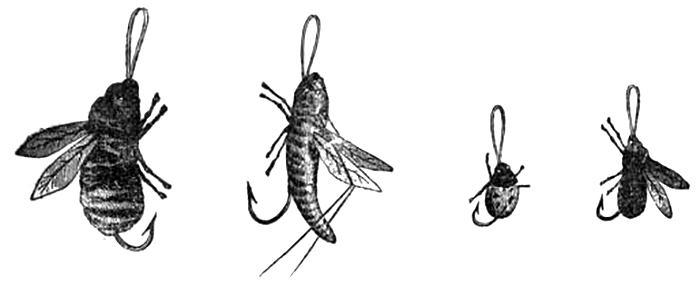
Mountain Scouting, A Hand-Book for Officers and Soldiers on the Frontiers” by Edward S. Farrow, U.S. Army 1881, has been a useful resource for me. The book mentions that Edward S. Farrow was an Assistant Instructor of Tactics at the U.S. Army Military Academy, and formerly Commanding Indian Scouts in the Department of the Columbia. Interestingly, it also seems to be self published. That’s the first time I’ve seen that in a book from this time period but my journey into this research is just starting. A section of the book is titled “Living Off the Country,” which is where I found these tips for catching and cooking fish. Hope you enjoy!
Living Off the Country
Nearly all the mountain streams contain an abundance of excellent fish; among others, many varieties of trout and salmon.
A magnificent and interesting species, known as the red fish, inhabit the waters of the Payette and Wallowa Lakes.
The salmon is by far the most numerous and valuable fish found west of the mountains, and is of excellent flavor. There are many different species, but all are endowed with great muscular power, which enables them to press their way upward beyond falls and rapids into the small branches of the rivers, near their very sources. They are found in the head-waters of the Salmon as late as October and November, when they perish. The Indians boil their salmon in birch bark, by the aid of hot stones, when they have no kettles.
The rudest substitutes for braided silk lines and split bamboo or lance-wood rods will serve to capture the handsomest specimens of the mountain beauties.
Any anomalous-looking contrivance of feathers or colored fur, resembling flies of the rudest type, are often as effective as the most carefully prepared baits.
When fishing unknown waters, it is generally well to use such baits as may be secured about their immediate shores. Grasshoppers, locusts, beetles, mantis, grubs, and many specimens of larvae found in decayed logs may be readily secured.
The drawing shows the manner of properlv baiting, so as to cause the exposed parts of the hook to appear as a part of the fly or bait.

Salmon roe or hard-bread dust cast into the water and permitted to sink gradually will attract the fish in great numbers.

A good substitute for a fish hook may be made by scraping a strip of whale bone, or tough wood, round and fine, and binding on another finely pointed piece, at an acute angle (a); or, an ordinary sail needle may be made to serve as a hook by making it fast to the line as shown(b). Even a horse-shoe nail may be converted into a hook.
Very good lines may be made from most any of the vegetable fibres obtained by soaking the stems of plants and the inner barks of trees; also, from the hair of animals, particularly that of horses.
To cook fish without cooking utensils:
Dig a hole in the ground sufficiently large to contain the fish; build a fire in it and let it burn. Remove the coals, leaving the hot ashes at the bottom, and put a thick layer of green grass over them; place the fish on top of this and cover with more grass; then rake back the coals and loose earth and continue a small fire on top. At the end of 40 or 50 minutes the fish will be nicely cooked, retaining all the juice; and the skin will peel off, leaving the flesh perfectly clean and free from ashes.